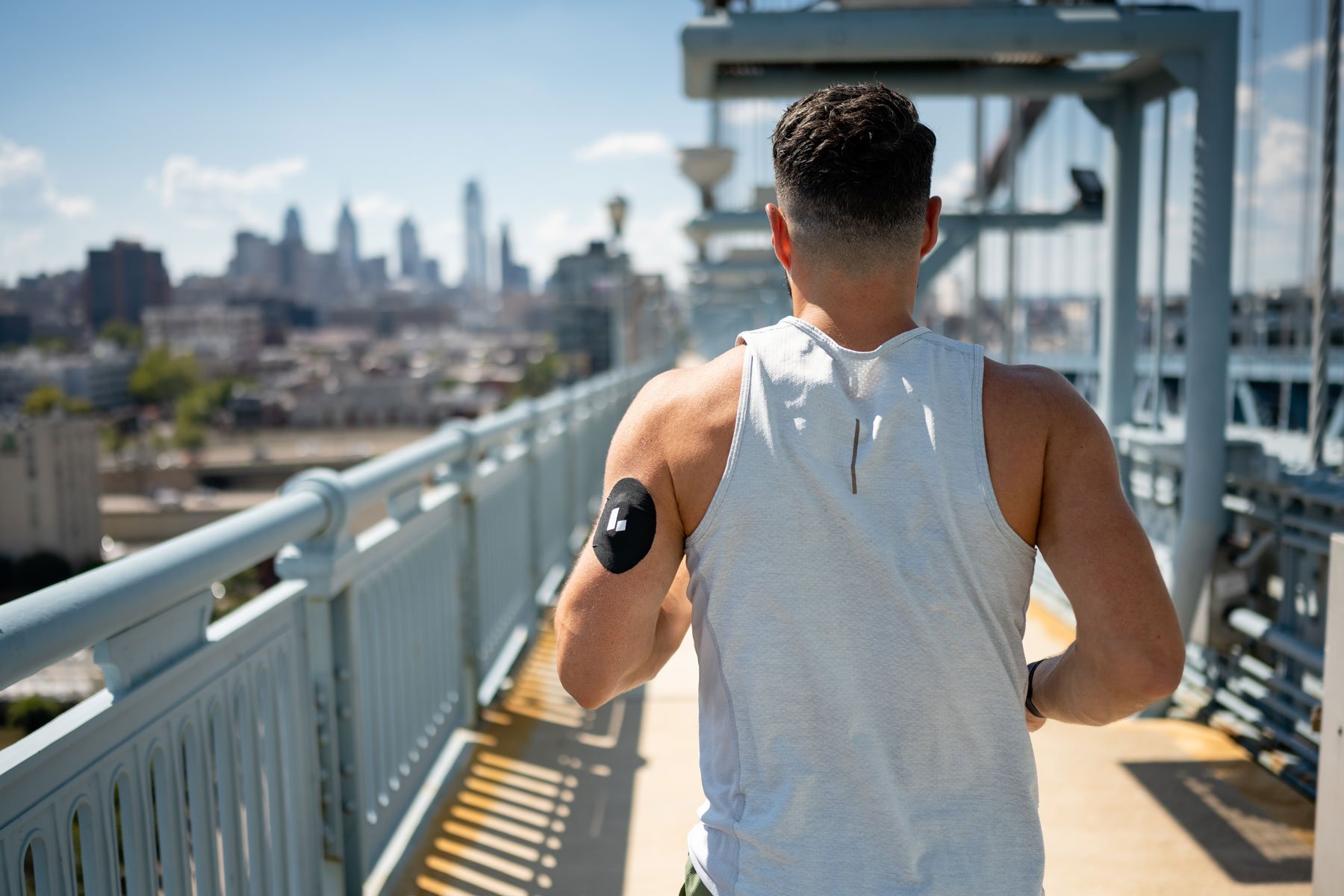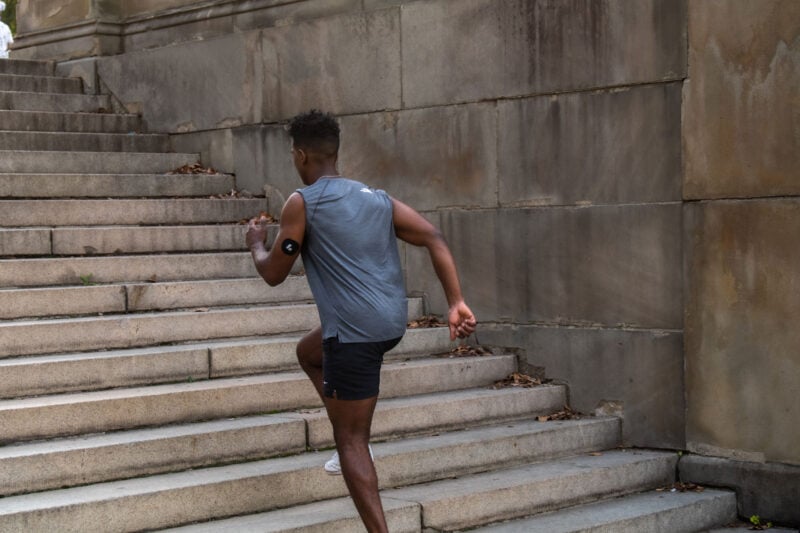Levels advisor Dominic D’Agostino, PhD, is a tenured Associate Professor in the Department of Molecular Pharmacology and Physiology at the University of South Florida Morsani College of Medicine. He was a research investigator and crew member on NASA’s Extreme Environment Mission Operation (NEEMO 22) and has a personal interest in environmental medicine and methods to enhance safety and physiological resilience in extreme environments. His research is supported by the Office of Naval Research (ONR), Department of Defense (DoD), private organizations, and foundations.
Athletes have used carbohydrate loading for more than 50 years. And while the popular notion of carb-loading is just cramming down pasta the night before a race, it is actually a systematic approach to athletic nutrition that involves reducing the carbohydrates eaten about a week before an event, followed by eating more carbohydrates than usual in the days before competition. This process helps maximize the amount of glycogen (stored glucose) in the body on event day. For athletes who typically eat carbohydrates, performing exercise for durations longer than 90 minutes, this approach can increase resilience, endurance, and exercise capacity during the event—especially in the later stages when they risk “bonking” or “hitting the wall.”
But carb loading is not a universally useful strategy. Low-carb athletes, for example, become “fat-adapted,” meaning they burn up to twice as much fat during exercise, so they may not benefit from extra glycogen stores. Others for whom carb loading is not useful: Athletes doing events shorter than 90 minutes, and the average person going to the gym.
In other words, that pasta meal the night before a marathon may have value—but only under particular conditions.
Even endurance athletes may experience some downsides to carb loading: It can result in gastrointestinal distress, including on the day of the event. The extra glycogen may cause water weight gain that can slow runners and racers down. And it may not work as well for women as it does for men. Exercisers may also be able to maintain their glycogen stores by consuming easily digested carbohydrates, like an energy gel or sports drink, during the event.
Here’s more about how carbohydrate loading works, the types of exercise it might help for, and potential downsides of this practice for your metabolic health and performance.
How Does Carb Loading Work?
To carb load, an athlete dials back their carbohydrate intake by 25 to 30 percent a week or so before their event. During this time, they continue to train hard (often harder), which depletes the muscle glycogen that’s stored in their body. Protocols vary, but typically three to five days before competition, the athlete starts eating 25 to 50 percent more carbohydrates to stimulate glycogen supercompensation. The day before competition, they eat a normal amount of carbs, which restores energy balance and insulin sensitivity so that on race day, their body can access and use the carbs more efficiently.
Carb loading can result in 10% or greater glycogen storage in the liver and muscle. This would make a big difference as a source of energy during intense or long-duration competition, but it’s not for everyone.
Low-carb athletes will preferentially use a higher percentage of fat during exercise—up to twice as much as athletes who usually eat a high-carb diet. The low-carb approach to endurance exercise has a glycogen-sparing effect, so low carb athletes are less likely to deplete their stores. This may let them have more in reserve later in the race or exercise session, negating the need for extra glycogen and sugary energy drinks to prevent bonking.
In a study published in February that was sponsored in part by Levels, my co-authors and I found that athletes who ate a low-carbohydrate diet for 31 days before a shorter, high-intensity athletic event performed the same as when they ate a high-carbohydrate diet for the same period. These fat-adapted, low-carb athletes performed just as well in a mile run and a series of half-mile sprints as when they were in a high-carb period, and they had lower fasting glucose levels in their blood and more stable levels of blood glucose. During the high-carb dieting period, some of these athletes reached blood glucose levels that were consistent with prediabetes.
What Kinds of Exercise Does Carb Loading Work For?
Carb loading is like overfilling your glycogen gas tank, so this “supercompensation” is only useful when you’re going to perform a bout of exercise that requires extra fuel and will empty that tank.
Specifically, carb loading has been shown to work for events longer than 90 minutes: Studies from the 1960s found that carb loading led to significantly faster times during the last 10 kilometers of a 40-kilometer race for race walkers. Other studies have found that carbohydrate loading can increase levels of glycogen stores compared to their base levels during normal carbohydrate intake. In a research review of decades of research on carbohydrate loading, the reviewers concluded that carb loading for events over 90 minutes could improve exercise capacity by 20 percent, and improve times by 2 to 3 percent. Another study showed that adding carbs the day before and morning of the race improved times by 4.9 minutes per gram per kilogram of bodyweight.
But in events lasting less than 90 minutes, having bonus glycogen stores doesn’t help: In a study of 45-minute cycling trials, subjects who ate a low-carbohydrate diet for three days before the ride performed just as well as when they ate higher carbs for three days before. Other studies have found that carb loading doesn’t help for high-intensity efforts like weight lifting, basketball and plyometrics. And for shorter cardio events, a low-carb diet may lead to the same performance results as eating a high carb diet over time.
It also may not work as well for women: In one study from 1995, carb loading increased the glycogen levels of male athletes by 41 percent, but didn’t improve the glycogen stores of the female athletes in the study at all.
When glycogen stores become depleted, they can also be restored during exercise. In a study of cyclists pedaling for 3 hours, drinking a sports drink containing 8 percent carbohydrates every 20 minutes helped trained cyclists spare their glycogen stores during the long ride. For carb-fed athletes who can carry some fuel and don’t find it upsets their stomach or makes them urinate too often, refueling during the event may help keep their glycogen levels up. In addition, the use of intra-working carb consumption may help in the context of high-volume resistance training.

How can CGM help improve exercise performance?
Metabolic health expert Dom D'Agostino, PhD, shares four ways real-time glucose data can help make you a better athlete.
Read the ArticleCan You Eat Too Many Carbs When Carb Loading?
To provide the most benefit, you need to eat the right amount of carbs. During the second phase of carb loading (when you consume higher-than-normal amounts), athletes may consume as much as 9 to 12 grams of carbs per kilogram of body weight per day. But the amount of glycogen that can be stored differs from athlete to athlete, and there’s an upper limit where your body can’t store more.
High-level athletes can perceive when they’ve filled their glycogen stores, have “spillover”, and elevated blood glucose (and insulin)—their face and skin get puffy, and body weight may increase as much as 5%. From there, they’ll dial back carb intake, and with proper hydration and light training, they can maintain glycogen stores and shed the excess water weight before competition.
To avoid carb-induced water retention, the use of continuous glucose monitoring (CGM) may be helpful to monitor glucose disposal and determine when you’ve topped off your glycogen stores:
- You should see the characteristic glucose spike, and then you should see a very characteristic decline. In the initial phases of carbing up, you’ll probably see a crash after the meal: Because your glycogen stores are depleted from the pre-loading period, they’re primed to suck up more carbohydrate into the muscle and convert it into glycogen.
- After about three days of carb loading following a glycogen depletion phase, you’ll start to see the elevation of glucose shift to the right and stay elevated for two hours or more. That means the insulin can’t do its job anymore. You’ve topped off the glycogen stores in the muscle and in the liver.
During the later stages of carb loading, you can facilitate more glycogen accumulation by doing light activity, like taking a short walk. In the beginning, your muscles will suck up anything because you’ve depleted the glycogen stores. And then the last day or two, you can prevent water retention and bloating if you eat a heavy meal and then go for a light walk: In studies, walks of 30 minutes after meals have been found to stabilize blood sugar after eating.
Are There Any Downsides to Carb Loading?
Not everyone benefits from filling up their glycogen stores before an event, and even if carb loading prevents bonking, the discomfort may not be worth it:
- You may experience gastrointestinal distress before the event. You generally want to get the extra carbohydrates from whole foods like rice or sweet potato that are easy to digest. Loading up with pizza, bread, or pasta can lead to bloating and retaining too much water. Eating too many carbs can also trigger insulin resistance and subcutaneous water retention. This can also cause an electrolyte imbalance: Your muscles can start excreting calcium and potassium, which can lead to cramping.
- You may have GI distress on the day of the event. To deal with this, some athletes eat a lower-fiber diet during their carb-loading phase. This can reduce the amount of food weight in the gut and the need to stop and use the bathroom during your race.
- It can slow you down. Thanks to water retention and your cells swelling, carb loading adds body weight—usually about 1 to 5%. If you’re an endurance athlete, this could slow you down. You’ll also likely need to pee a lot—and if that happens during the event, it could impact your time.
- Low-carb dieters may not see advantages. If your body is adapted to doing one-hour, 90-minute, or two-hour workouts without carbohydrates, you’ll preferentially use more fat during your longer workouts, which could mean less glycogen is used from your muscles’ stores. As a result, you may not benefit from bonus glycogen stores that carb loading would provide.
In the end, even for events longer than 90 minutes, you don’t need to oversaturate your glycogen stores if you can replenish them during the event by eating or drinking a digestible form of carbohydrate that doesn’t cause GI stress.
 Interested in using a CGM to keep track of your carbs?
Interested in using a CGM to keep track of your carbs?
Levels, the health tech company behind this blog, helps people get CGMs shipped directly to their door, and to understand their data to track meals and performance over time. Click here to learn more about Levels.

 Interested in using a CGM to keep track of your carbs?
Interested in using a CGM to keep track of your carbs?






